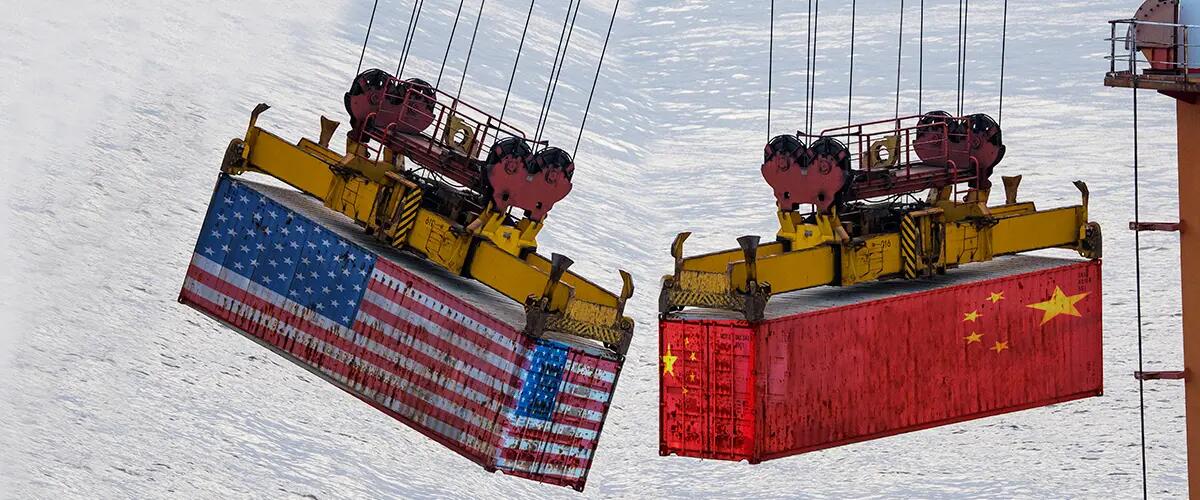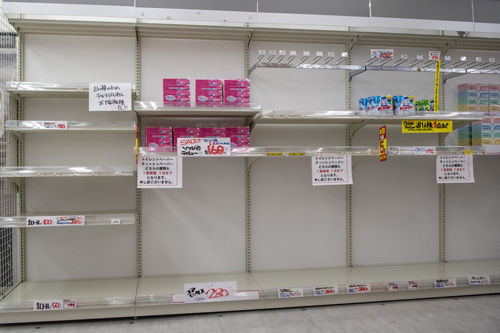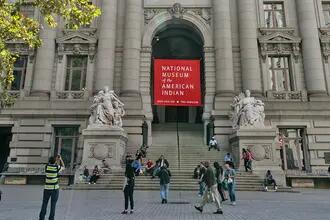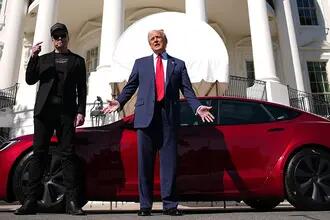
US and Chinese supply chains hang at the mercy of the COVID-19 virus.
A rampaging virus, an emasculated Fed, and a misunderstood Milton Friedman
By Farrokh Langdana, Director, Executive MBA Program & Professor of Finance and Economics
All opinions expressed here are those of Prof. Farrokh Langdana’s and not those of the Rutgers Executive MBA Program or Rutgers Business School. Many of the questions are actual emails from students and alumni.
For more of Prof. Langdana’s blogs please visit his Faculty Blog: business.rutgers.edu/Langdanamacro.
The Federal Reserve cut interest rates 0.5% to 1.25% (3/3/20) in an emergency effort to contain the economic impact of the coronavirus (COVID-19), the biggest one-time cut since the financial crisis in 2008.
So? Is the Market blowing-off the Fed? Has the Fed lost its Mojo?
COVID-19 is a supply-side exogenous shock. Picture the aggregate supply (AS) curve being shoved to the left. Past examples of these were oil shocks, Hurricane Katrina, 9/11, droughts, famines, no monsoon in India, Brexit, these sort of things. This baby this time is a shock on our supply-chains and to our physical well-being – in other words a massive negative productivity shock. In general, supply-side shock as are known as “body blows.” Not much can be done except to stockpile food or have massive petroleum reserves, etc.
But in this case, didn’t Milton Friedman (originally from Rutgers) point out that a massive monetary injection can shore-up consumer confidence if done forcefully and quickly, as following 9/11. Right?
We all know what Prof. Friedman taught us. But Prof. Milton Friedman was speaking in general terms. Not to this current case where the Fed had already been injecting money in an economy with collapsed confidence (now for a long time), and in a Liquidity Trap situation (where lowering interest rates does nothing except inject more money that drives up asset price bubbles). We were at 1.75% Federal Funds Rate (FFR), and we are now at 1.25%. Will you now rush out and buy a house? A car? Make capital investment? In this climate? No. We are in a Liquidity Trap! A Friedmanian response was perfect after 9/11, or after a massive oil shock or when a massive hedge fund collapsed….but not in this case, in an economy already damaged by a long Trade War.

So then if this does not work, no harm in trying, yes?
Sigh. If rates are at 1-1.25%, and if in the future we really do need to lower rates, then where can we go from here? This is a classic case of the Fed being “out of ammunition.” Yes, there is “harm” in spending monetary ammo needlessly!
So why was it done?
There is a widely held and mistaken belief that the economy is the stock market. It is not. Propping up an asset price bubble is not the same as jump-starting the economy. There was huge pressure on the Fed Chairman from Trump who sees the stock market’s success as a proxy for “economic health” and hence, a ticket to his re-election.
You mentioned buying a house. Housing is actually strong and was/is on an upward trajectory, no matter how you slice it! There was economic growth!
Keep in mind that Housing lags business cycles. What you see in housing today reflects on the economy 8-12 months ago, or maybe more! Long term contracts are signed in housing, and hence the market lags the economy – except the case of the 2008 Subprime Crisis when Housing, in a rare display of macro-unconventionality, led us into the Great Recession.
And regarding growth – we would have seen much more if not for the crazy Trade Wars that were a head-wind to our nascent recovery, and mind you, 75% of the tariffs (the big ones) are still in place!
But how could COVID-19 cause such havoc in the markets?
It is not just COVID-19. The virus was just the proverbial last straw. Quantitative Easing (massive money creation of the order of billions per month) had begun again from Fall 2019 to the order of over $8 billion a month. Liquidity was again being pumped into the economy by an emasculated Fed that was only too happy to oblige the President—ergo, asset price bubbles began to reflate thanks to the money being printed. Then came the Trade war, then recently, all other global major economies headed toward recession – Japan and Germany are going down – so now the head winds are piling up! Then Bernie Sanders burst out of the pack with promises of retribution to the Suits in America – and maybe tax reform is long overdue, but then I digress. And finally, massive supply chain disruption due to the virus, and so time for profit-taking (sell securities that had risen in price). The market collapses. The head winds burst through.
Supply Chains hammered plus Trade War. So, our imports get battered, right?
Right, but now it is much more complicated. According to my math, 60-70% of the value of global trade is in intra-industry trade. This is when many countries make different components of, say, one final product like the Boeing 787 Dreamliner, or many countries do clinical testing for a new vaccine made by large pharmaceutical companies in New Jersey, or to make the iPhone. You see what happens here is that in Intra-Industry trade, when some countries cannot deliver on their share of the final product made by the home country, then the home country’s exports shut down too. Boeing cannot make Dreamliners if the components from China are held up. Merck’s new vaccine cannot move forward if clinical tests in countries B, C, and D are halted or compromised. Back in the day, we mostly had inter-industry trade: We sold jet engines to B and B sent coffee to us in A. That model has been dwarfed by the intra-industry trade model.

Wow. So, it’s not just imports at stake – but our exports too. If you could advise President Trump, what would you say?
He needs to stop obsessing on his hourly news feeds of the stock market. He has only one button left to press to try and alleviate this mess, which is to announce a quick and real end to the Trade War. And to mean it. And to do it dramatically—he and a senior Chinese official (President Xi perhaps) need to be seen tearing up some documents and shaking hands. But…..how to sell this to his base who wanted him to be “Tough on China?” So that would be an issue, I suppose.
My plea to the President would be: Mr. President, please try to understand before it is too late. You may be bigger than the emasculated Fed, bigger than all your party’s rivals in the last election, bigger that Hillary, bigger than all the Republicans in government who tremble at the thought of contradicting you……but please understand. You cannot be bigger than the Markets. Markets will always win. Markets are endogenously driven. They cannot be bullied, or cajoled or threatened or ridiculed or deported or fired. Markets are sacrosanct. You try and manage them at your own peril. And Ours.
Final words?
Yes. Welcome to the Powerhouse.
Economics in Rutgers Executive MBA—The Powerhouse—has been ranked #2 globally, for the third time, by Financial Times, and has been in the Top 10 many times.
Details at https://www.business.rutgers.edu/executive-mba.

Press: For all media inquiries see our Media Kit


